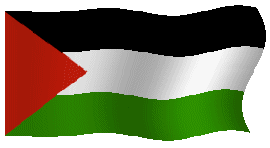| Topic: Free Palestine | |
|---|---|
|
The United Nations (UN) played a pivotal role in the establishment of the Jewish State by passing UN Resolution 181 in 1947, which called for the partition of British Mandate Palestine into two states, one Jewish and one Arab. Following Israel's independence in 1948, the Jewish State became an official member-state of the international body.
At the same time, the international body has a continuing history of a one-sided, hostile approach to Israel. After decades of bias and marginalization, recent years have brought some positive developments for Israel to the UN. Nonetheless, the UN's record and culture continue to demonstrate a predisposition against Israel. Successive Secretary Generals have acknowledged this an issue for the institution. Indeed, in a meeting in April 2007, Secretary-General Ban Ki-moon acknowledged to ADL leaders that Israel has been treated poorly at the UN and that, while some progress has been made, this bias still remains an issue. Secretary Ban stated this view publicly during his visit to Israel in August 2013. “Unfortunately, because of the [Israeli-Palestinian] conflict, Israel’s been weighed down by criticism and suffered from bias — and sometimes even discrimination,” Ban said in response to a question about discrimination against Israel at the UN. “It’s an unfortunate situation,” Ban said, adding that Israel should be treated equal to all the other 192 member states. In his first public address to a Jewish group, Secretary General Antonio Guterres told the World Jewish Congress in April 2017: “As secretary general of the United Nations I consider that the State of Israel needs to be treated as any other state.” And in August 2017, he stated that calls for Israel’s destruction are a form of modern-day anti-Semitism. UN actions continue to play an important role in the conflict. Resolutions 242 and 338, which were passed following the 1967 Six Day War and during 1973 Yom Kippur, call for Israel to withdraw from territories occupied in 1967, and for peace talks between Israel and her Arab neighbors based on the land-for-peace premise. These resolutions continue to play a role in the ongoing debate at the UN over the Israeli-Palestinian conflict, and are often cited to criticize Israel’s presence in the West Bank and East Jerusalem. Most recently, in December 2016, the Security Council passed Resolution 2334which condemned Israeli settlement building, and labeled settlements a “major obstacle” to peace. The resolution passed 14-0, with the US abstaining. It was the first Security Council resolution to deal specifically with settlements in over 35 years. Israel rejected the resolution, and Israel’s Ambassador to the U.N., Danny Danon called said it “set us back in pursuit of peace” and “rewarded” the Palestinians “to continue down a dangerous path they have chosen” of avoiding direct negotiations with Israel. In December 2017, the US vetoed a UN Security Council resolution calling on President Trump to reverse the US decision to recognize Jerusalem as Israel’s capital. In June 2018, the US vetoed a resolution condemning Israel for using excessive forwards Palestinian protesters along the Gaza border. There was no mention of Hamas in the resolution. A second resolution that did reference Hamas’s role failed to pass. |
|
|
|
|
|
Since Israel’s establishment, Arab member states of the UN have used the General Assembly (GA) as a forum for isolating and chastising Israel. With support from third-world nations, particularly the Non-Aligned Movement, and others, the Arab states have had little difficulty passing harsh anti-Israel resolutions through the GA. Even today, the strength of these groups in the world body allows them to continue rebuking Israel. While anti-Israel resolutions are easily passed in the GA, this is not the case in the Security Council, where resolutions are binding in nature, as the United States has used its veto power to prevent the passage of such resolutions.
In the 1970s, the Arab bloc used its power to establish and authorize funding for several UN committees and divisions of the Secretariat which primarily carry out the anti-Israel agenda. Among these are: The Division for Palestinian Rights of the Secretariat, The Committee to Investigate Israeli Practices in the Territories, and The Committee on the Exercise of the Inalienable Rights of the Palestinian People. Today, these bodies continue to be deeply engaged in promoting programs and initiatives that are harshly critical of Israel. A low point at the UN was the passage of the Arab and Soviet-sponsored United Nations resolution of November 10, 1975 which declared Zionism a “form of racism and racial discrimination.” The highly politicized resolution was aimed at denying Israel its political legitimacy by attacking its moral basis for existence. The resolution was finally repealed on December 16, 1991. For decades, Israel was the only member state consistently denied admission into a regional group, the organizational structure by which member states can participate on UN bodies and committees. The Arab states continue to prevent Israeli membership in the Asian Regional Group, Israel’s natural geopolitical grouping. As a result, Israel long sought entry into the Western and Others Group (WEOG) and in May 2000 was granted admission in New York. In 2013, Israel was invited to join WEOG in Geneva, the seat of several UN bodies and subsidiary organizations. |
|
|
|
|
|
The UN Human Rights Council (HRC), which replaced the Commission on Human Rights in March 2006, has continued its predecessor's extreme focus on and biased treatment of issues relating to Israel, particularly in comparison with its mild action on pressing international human rights crises. The permanent agenda of the HRC includes a specific item targeting Israel - Agenda Item #7 – which is titled: "Human rights situation in Palestine and other occupied Arab territories: Human rights violations and implications of the Israeli occupation of Palestine and other occupied Arab territories and the Right to self-determination of the Palestinian people. Israel is the only country to appear on the HRC's permanent agenda, while other countries such as Iran and Sudan, notorious for their human rights abuses, are included as part of the general debate.
The HRC has appointed a few “Special Rapporteurs” on “the situation of human rights in the Palestinian territories occupied since 1967,” whose biased mandate has been evident in their one-sided reports on the Israeli-Palestinian conflict. Two of the most problematic Special Rapporteurs have been John Dugard – who in 2008 justified Palestinian terrorism as an “inevitable consequence” of Israel’s actions – and Richard Falk – who has made a number of outrageous comments about Israel, including endorsing the anti-Israel BDS movement and comparing Israel’s treatment of Palestinians to Nazi activity during the Holocaust. The HRC has also initiated a number of “investigations” of Israeli military action following recent conflicts between Israel and Hamas in Gaza. In 2009, it published the so-called “Goldstone Report” (named for the investigation’s head Justice Richard Goldstone of South Africa) which accused Israel of committing war crimes in Gaza during its military operations in December 2008 – January 2009 (Operation Cast Lead), including the deliberate and premeditated targeting of civilians. While the report contained some discussion of Palestinian actions, including charges that Hamas violated international law, the focus of the report and its recommendations were on Israel, causing Israel, the United States, some European countries and others in the international community to reject the report’s validity. In 2011, Justice Goldstone published an op-ed where he withdrew the report’s claim that Israel deliberately targeted civilians, and commended Israel’s independent investigations into charges of abuse. In 2015, the HRC published a report on Israel’s 2014 military operation against Hamas in Gaza (Operation Protective Edge), which accused both Israel and Hamas of violations in international law which could amount to war crimes. The report accused Israel of using disproportionate force in Gaza, and not doing enough to prevent civilian casualties. Israel and US rejected the report. In 2016, the HRC ratcheted up its hostility to Israel by passing a resolution calling for the creation of a “blacklist” of companies operating in the West Bank, East Jerusalem and Golan Heights. The resolution condemned Israeli settlements, and called on companies not to do business with them. The UN High Commissioner for Human Rights said he planned to publish the list by the end of 2017, despite objections from Israel and the US. As of 2018, the UN has only published a list of countries where the companies are based, but not the names of the companies themselves. In June 2018, the US announced that it was formally withdrawing from the HRC, citing anti-Israel bias and the body’s inclusion of human rights-violating countries as motivating the decision. The UK also announced that it would withdraw if the Council continued its anti-Israel bias. |
|
|
|
|
|
In April 2016, the UNESCO Executive Board adopted a resolution on “Occupied Palestine” which was harshly critical of Israel and which only refers to the Muslim name for the Temple Mount – Al-Aqsa Mosque/Al-Haram al-Sharif – without using the Jewish “Temple Mount”, effectively ignoring the Jewish connection to the site.
In October 2016, the Executive Board passed a resolution on Jerusalem which referred to the Temple Mount / Holy Sanctuary solely by its Muslim name and to the Western Wall Plaza in quotation marks, effectively diminishing the 3,000 year Jewish connection to the city. In July 2017, UNESCO’s World Heritage Committee voted to designate the old city of Hebron, including the Tomb of the Patriarchs, as a “World Heritage Site in Danger” and listed the site as part of the State of Palestine. |
|
|
|
|
|
The UN has also become a vehicle for the Palestinians to take unilateral action to gain statehood recognition.
In September 2011, the Palestinians began the process of securing UN admission by submitting an application to the UN Security Council. The Palestinians ultimately decided to “postpone” a vote on their admission after it became clear that they lacked sufficient support for approval. On October 31, 2011, the United Nations Educational, Scientific and Cultural Organization (UNESCO) granted “Palestine” membership, marking the first time the Palestinians had gained full admittance into a UN organization. In 2012, the UNGA voted overwhelmingly to upgrade the Palestinians to non-member observer status, effectively recognizing the State of Palestine, a move that was rejected by Israel and the US as a ploy to circumvent direct negotiations with Israel. Since January 2019, the Palestinians have chaired the Group of 77 bloc (G77), the largest bloc of developing countries making up over 80% of the world’s population. |
|
|
|
|
|
In recent years, the UN has begun to address other issues of concern to the Jewish community, particularly anti-Semitism and Holocaust denial, in a highly visible way. In January 2015, the UNGA held its first ever special session on the rise of anti-Semitic violence worldwide. The event was cosponsored by the US, Israel, the 28 EU members and other countries, and featured a statements and speeches by UN Secretary General Ban Ki-Moon and a number of government officials.
In June 2019, the UN General Assembly held an informal session on combating anti-Semitism and other forms of racism. The meeting was organized at the initiative of the Israeli UN Mission, was over 90 countries participated, including representatives from Syria, Egypt, Turkey, Iran and Morocco. Secretary General Antonio Guterres opened the session, saying “I guarantee you that I will continue to call out Anti-Semitic racism and other forms of hatred loudly and unapologetically.” Hundreds of guests also participated, including Rabbi Yisroel Goldstein, who was injured in the April 27 shooting attack at the Poway synagogue in San Diego, as well as the daughter and sister of Lori Gilbert Kaye, who was killed in the attack. |
|
|
|
|
|
General Facts & Figures The Palestinian “Nakba” (“catastrophe” in Arabic) refers to the mass expulsion of Palestinian Arabs from British Mandate Palestine during Israel’s creation (1947-49). The Nakba was not an unintended result of war. It was a deliberate and systematic act necessary for the creation of a Jewish majority state in historic Palestine, which was overwhelmingly Arab prior to 1948. Internally, Zionist Jewish leaders used the euphemism “transfer” when discussing plans for what today would be called ethnic cleansing. The Nakba’s roots lay in the emergence of political Zionism in 19th century Europe, when some Jews, influenced by the nationalism then sweeping the continent, concluded that the remedy to centuries of anti-Semitic persecution in Europe and Russia was the creation of a nation state for Jews in Palestine and began emigrating as colonists to the Holy Land, displacing indigenous Palestinians in the process. In November 1947, following the horrors of World War II and the Nazi genocide of European Jewry, the newly-created United Nations approved a plan to partition Mandate Palestine into Jewish and Arab states. It allocated approximately 55% of the land to the proposed Jewish state, although Zionist Jews owned only about 7% of the private land in Palestine and made up only about 33% of the population, a large percentage of whom were recent immigrants from Europe. The Palestinian Arab state was to be created on 42% of Mandate Palestine, with Jerusalem becoming an international city. (See here for map of the partition plan and subsequent 1949 armistice lines.) Almost immediately after the partition plan was passed, violence broke out and large-scale expulsions of Palestinians began, long before the armies of neighboring Arab states became involved. When Zionist forces finished expanding, the new state of Israel comprised 78% of historic Palestine, with the remainder, the West Bank, including East Jerusalem, and Gaza, falling under the control of Jordan and Egypt, respectively. In the 1967 War, Israel occupied the remaining 22% and began colonizing them shortly thereafter. The Nakba did not end in 1948 and continues until today, in the form of Israel’s ongoing theft of Palestinian land for settlements and for Jewish communities inside Israel, its destruction of Palestinian homes and agricultural land, revocation of residency rights , deportations, periodic brutal military assaults that result in mass civilian casualties such as the one that took place in Gaza in the summer of 2014, and the denial of the internationally-recognized legal right of return of millions of stateless Palestinian refugees. The Nakba by the Numbers Between 750,000 and one million : The number of Palestinians expelled and made refugees by Zionist paramilitaries, and subsequently Israeli forces, during Israel’s creation in 1947-49. Between 250,000 and 350,000 : The number of Palestinians expelled from their homes by Zionist paramilitaries between the passage of the UN partition plan in November 1947 and Israel’s declaration of independence on May15, 1948 - prior to the start of the war with neighboring Arab states. Approximately 7.1 million : The number of Palestinian refugees and displaced persons as of 2009, including Nakba survivors and their descendants. They are located mostly in the occupied West Bank and neighboring Arab countries such as Lebanon, Jordan, and Syria, denied their internationally-recognized legal right to return to their homeland by Israel, simply because they are not Jewish. Approximately 150,000 : The number of Palestinians who remained inside what became Israel's borders in 1948, many of them internally displaced. These Palestinians (sometimes called “Israeli Arabs”) were granted Israeli citizenship but stripped of most of their land and placed under martial law until 1966. As of 2018, there are nearly two million Palestinian citizens of Israel, who live as second-class citizens in their own homeland, subject to dozens of laws that discriminate against them because they are not Jewish. At least two dozen : The number of massacres of Palestinian civilians by Zionist and Israeli forces, which played a crucial role in spurring the mass flight of Palestinians from their homes. Approximately 100 : The number of Palestinian civilians, including women and children, massacred in the town of Deir Yassin on April 9, 1948, by members of the Irgun and Stern Gang, pre-state Zionist terrorist organizations led by future Israeli prime ministers Menachem Begin and Yitzhak Shamir, respectively. More than 400 : The number of Palestinian cities and towns systematically destroyed by Israeli forces or repopulated with Jews between 1948 and 1950. Most Palestinian population centers, including homes, businesses, houses of worship, and vibrant urban centers, were demolished to prevent the return of their Palestinian owners, now refugees outside of Israel's pre-1967 borders, or internally displaced inside of them. (See here for interactive map of Palestinian population centers destroyed during Israel's creation.) Approximately 4,244,776 : The number of acres of Palestinian land expropriated by Israel during and immediately following its creation in 1948. Between 100 and 200 billion : The total estimated monetary loss of Palestinians dispossessed during Israel's creation, in current US dollars. https://imeu.org/article/quick-facts-the-palestinian-nakba 
|
|
|
|
|
|
What's the difference between anti-Semitism and anti-Zionism? 

|
|
|
|
|
|
https://themuslimvibe.com/faith-islam/in-history/heres-what-malcolm-x-had-to-say-about-zionism “They cripple the bird’s wing, and then condemn it for not flying as fast as they.” 
|
|
|
|
|
|
General Facts & Figures The Palestinian “Nakba” (“catastrophe” in Arabic) refers to the mass expulsion of Palestinian Arabs from British Mandate Palestine during Israel’s creation (1947-49). The Nakba was not an unintended result of war. It was a deliberate and systematic act necessary for the creation of a Jewish majority state in historic Palestine, which was overwhelmingly Arab prior to 1948. Internally, Zionist Jewish leaders used the euphemism “transfer” when discussing plans for what today would be called ethnic cleansing. The Nakba’s roots lay in the emergence of political Zionism in 19th century Europe, when some Jews, influenced by the nationalism then sweeping the continent, concluded that the remedy to centuries of anti-Semitic persecution in Europe and Russia was the creation of a nation state for Jews in Palestine and began emigrating as colonists to the Holy Land, displacing indigenous Palestinians in the process. In November 1947, following the horrors of World War II and the Nazi genocide of European Jewry, the newly-created United Nations approved a plan to partition Mandate Palestine into Jewish and Arab states. It allocated approximately 55% of the land to the proposed Jewish state, although Zionist Jews owned only about 7% of the private land in Palestine and made up only about 33% of the population, a large percentage of whom were recent immigrants from Europe. The Palestinian Arab state was to be created on 42% of Mandate Palestine, with Jerusalem becoming an international city. (See here for map of the partition plan and subsequent 1949 armistice lines.) Almost immediately after the partition plan was passed, violence broke out and large-scale expulsions of Palestinians began, long before the armies of neighboring Arab states became involved. When Zionist forces finished expanding, the new state of Israel comprised 78% of historic Palestine, with the remainder, the West Bank, including East Jerusalem, and Gaza, falling under the control of Jordan and Egypt, respectively. In the 1967 War, Israel occupied the remaining 22% and began colonizing them shortly thereafter. The Nakba did not end in 1948 and continues until today, in the form of Israel’s ongoing theft of Palestinian land for settlements and for Jewish communities inside Israel, its destruction of Palestinian homes and agricultural land, revocation of residency rights , deportations, periodic brutal military assaults that result in mass civilian casualties such as the one that took place in Gaza in the summer of 2014, and the denial of the internationally-recognized legal right of return of millions of stateless Palestinian refugees. The Nakba by the Numbers Between 750,000 and one million : The number of Palestinians expelled and made refugees by Zionist paramilitaries, and subsequently Israeli forces, during Israel’s creation in 1947-49. Between 250,000 and 350,000 : The number of Palestinians expelled from their homes by Zionist paramilitaries between the passage of the UN partition plan in November 1947 and Israel’s declaration of independence on May15, 1948 - prior to the start of the war with neighboring Arab states. Approximately 7.1 million : The number of Palestinian refugees and displaced persons as of 2009, including Nakba survivors and their descendants. They are located mostly in the occupied West Bank and neighboring Arab countries such as Lebanon, Jordan, and Syria, denied their internationally-recognized legal right to return to their homeland by Israel, simply because they are not Jewish. Approximately 150,000 : The number of Palestinians who remained inside what became Israel's borders in 1948, many of them internally displaced. These Palestinians (sometimes called “Israeli Arabs”) were granted Israeli citizenship but stripped of most of their land and placed under martial law until 1966. As of 2018, there are nearly two million Palestinian citizens of Israel, who live as second-class citizens in their own homeland, subject to dozens of laws that discriminate against them because they are not Jewish. At least two dozen : The number of massacres of Palestinian civilians by Zionist and Israeli forces, which played a crucial role in spurring the mass flight of Palestinians from their homes. Approximately 100 : The number of Palestinian civilians, including women and children, massacred in the town of Deir Yassin on April 9, 1948, by members of the Irgun and Stern Gang, pre-state Zionist terrorist organizations led by future Israeli prime ministers Menachem Begin and Yitzhak Shamir, respectively. More than 400 : The number of Palestinian cities and towns systematically destroyed by Israeli forces or repopulated with Jews between 1948 and 1950. Most Palestinian population centers, including homes, businesses, houses of worship, and vibrant urban centers, were demolished to prevent the return of their Palestinian owners, now refugees outside of Israel's pre-1967 borders, or internally displaced inside of them. (See here for interactive map of Palestinian population centers destroyed during Israel's creation.) Approximately 4,244,776 : The number of acres of Palestinian land expropriated by Israel during and immediately following its creation in 1948. Between 100 and 200 billion : The total estimated monetary loss of Palestinians dispossessed during Israel's creation, in current US dollars. https://imeu.org/article/quick-facts-the-palestinian-nakba 
typical response... you invade with overwhelming forces by multiple countries... get your *** handed to you... cry about how unfair life is... |
|
|
|
|
|
"How many more protesters must be shot, rockets fired, and little kids must be killed until the endless cycle of violence ends? The Status quo of occupation and humanitarian crisis in Gaza is unsustainable. Only real justice can bring about security and lasting peace." llhan Omar (US Congresswoman) 
|
|
|
|
|
|
2005
January 2 - Nissim Arbiv, 25, of Nissanit in the Gaza Strip was mortally wounded in a mortar shell attack while working in the Erez Industrial Zone. He died of his wounds on January 11. Two others were wounded in the attack, for which Hamas claimed responsibility. January 7 - St.-Sgt. Yosef (Yossi) Atia, 21, of Petah Tikva, was killed and three fellow off-duty soldiers were wounded when Palestinian gunmen opened fire on their car on the Trans-Samaria Highway. The Fatah al-Aqsa Martyrs Brigades claimed responsibility for the attack. January 12 - Gideon Rivlin, 50, of Ganei Tal was killed and three IDF soldiers were wounded when a bomb was detonated as a military vehicle patroled the route near Morag in the southern Gaza Strip. Two terrorists were killed by IDF forces. The area was booby-trapped with explosive devices, in addition to the bomb that exploded. The Islamic Jihad claimed responsibility for the attack. January 13 - On Thursday night, shortly before the closing of the Karni Crossing, terrorists activated an explosive device on the Palestinian side, blowing a hole in the door through which Palestinian terrorists infiltrated the Israeli side of the crossing and opened fire at Israeli civilians. As a result of the explosion and exchanges of fire, six Israeli civilians and three Palestinian terrorists were killed, and five Israeli civilians were wounded. Hamas and the Fatah al-Aqsa Martyrs' Brigades claimed joint responsiblity for the attack. The victims: Dror Gizri, 30, of Sderot; Ibrahim Kahili, 46, of Umm al-Ghanem; Munam Abu Sabia, 33, of Daburiyeh; Ivan Shmilov, 53, of Sderot; Herzl Shlomo, 51, of Sderot; and Ofer Tiri, 23, of Ashkelon. January 15 - Ayala-Haya (Ella) Abukasis, 17, of Sderot was mortally wounded when a Qassam rocket landed near her and shrapnel penetrated her cerebellum, leaving her brain dead. She was struck while protecting her younger brother, who was lightly wounded. Kept on life support throughout the week, her parents agreed to stop treatment when doctors told them there was no chance of recovery. She died on January 21. January 18 - Oded Sharon, 36, from Gan Yavne, an ISA officer, was killed, an IDF officer seriously wounded, and four IDF soldiers and three members of the ISA were lightly wounded in a suicide bombing attack at the Gush Katif junction in the central Gaza Strip. While search procedures were being implemented at a post at the junction, the suicide bomber with explosives strapped to his body detonated himself. Hamas claimed responsibility for the attack. February 25 - Five people were killed and 50 wounded Friday night, when a suicide bomber blew himself up outside the Stage club on the Tel Aviv promenade at around 11:20 P.M., on the corner of Herbert Samuel and Yonah Hanavi streets. The Islamic Jihad claimed responsibility for the attack. The victims: Yitzhak Buzaglo, 40, of Mishmar Hayarden; Aryeh Nagar, 37, of Kfar Sava; Yael Orbach, 28, of Rehovot; Ronen Ruevenov, 30, of Tel Aviv. Odelia Hubara, 26, of Jerusalem, died of her wounds on February 28. May 2 - St.-Sgt. Dan Talasnikov, 21, of Nir Galim was killed and another soldier lightly wounded in an exchange of fire during an operation to arrest wanted terrorists from the Islamic Jihad in the village of Saida, north of Tulkarem. One of the terrorists, responsible for the February 25 suicide bombing in Tel Aviv, was killed. The second terrorist was apprehended. June 7 - Three workers were killed and five wounded when a Qassam rocket hit a packing shed in Ganei Tal, in the Gaza Strip, penetrating the building's roof and exploding indoors. The Islamic Jihad claimed responsibility for the attack. The Chinese worker killed has been identified as Bi Shude, 46, from Jilin province in northeastern China. The Palestinian workers killed were Salah Ayash Imran, 57, of Khan Yunis, married and the father of 8, and Muhammed Mahmoud Jaroun, of Khan Yunis. June 19 - IDF NCO Sgt.-Maj. Avi Karouchi, 25, of Beersheba was killed and two soldiers were wounded in a coordinated Palestinian attack in which RPG missiles and gunfire were fired at an IDF engineering force conducting construction work on the Philadelphi route along the Israeli-Egyptian border. The Islamic Jihad claimed responsibility for the attack. June 20 - Yevgeny Reider, 28 of Hermesh was killed and a 16-year old teenager was wounded in a terrorist shooting attack in the village of Baka A-Sharkiya in the northern West Bank. The Islamic Jihad claimed responsibility for the attack. June 24 - Avihai Levy, 17, of Beit Hagai was killed in a drive-by terrorist shooting at a hitchhiking stop about 200 meters from the entrance to Beit Hagai, south of Hebron. Aviad Mansour, 16, of Otniel, fatally wounded in the attack, died on June 26. Three others were wounded. The Islamic Jihad and Fatah al-Aqsa Martyrs' Brigades claimed responsibility for the attack. July 12 - Rachel Ben Abu, 16, of Tel Aviv; Nofar Horowitz, 16, of Tel Aviv; and Julia Voloshin, 31, of Netanya were killed and about 90 people were wounded when a suicide bomber detonated himself outside Hasharon Mall in Netanya. Anya Lifshitz, 50, of Netanya, who was mortally wounded, succumbed to her wounds on July 13. Cpl. Moshe Maor Jan, 21, of Netanya died of his wounds on July 14. The bomber was identified as Ahmed Abu Khalil, 18, from the West Bank village of Atil. The Islamic Jihad claimed responsibility for the attack. July 14 - Dana Gelkovitch, 22, of Kibbutz Bror Hayil, was killed by a Qassam rocket fired at Netiv Ha'asara in the northern Gaza Strip. Hamas, Islamic Jihad and Fatah all claimed responsibility for the attack. July 23 - Dov, 58, and Rachel Kol, 53, of Jerusalem were killed late Saturday night near the Kissufim crossing in the southern Gaza Strip while returning home from visiting family in Gush Katif. Three others were wounded. The Islamic Jihad and Fatah al Aqsa Martyrs' Brigades claimed responsibility for the attack. August 24 - Shmuel Mett, 21, of Britain, a Mir Yeshiva student, was returning from the Western Wall to the yeshiva in Jerusalem’s Beit Yisrael neighborhood when he was fatally stabbed near Jaffa Gate in the Old City. Two other students were wounded. September 21 - Sasson Nuriel, 55, of Jerusalem was kidnapped and slain by Palestinian terrorists. His body was found on Sept 26 in a garbage dump in the industrial zone of Bitunya, west of Ramallah. Hamas claimed responsibility for the attack. October 16 - Matat (Rosenfeld) Adler, 21, and her cousin, Kineret Mandel, 23, both of Carmel, and Oz Ben-Meir, 15, of Maon were killed and three were wounded when Palestinians opened fire at the Gush Etzion junction south of Jerusalem. Another teenager was seriously shot and wounded near Eli, in Samaria. The Fatah Al-Aqsa Martyrs' Brigades claimed responsibility for both attacks. October 26 - Michael Kaufman, 68, of Hadera, Pirhiya Machlouf, 53, of Hadera, Sabiha Nissim, 66, of Moshav Ahituv, Jamil Qa'adan, 48, of Baka al-Gharbiya, and Ya'acov Rahmani, 68, of Hadera were murdered by a suicide bomber who detonated himself at the Hadera open-air market. A sixth victim, Genia Poleis, 66, of Hadera, died of her wounds 11 days later, on Saturday, November 5. The Islamic Jihad claimed responsibility for the atrocity. November 2 - St.-Sgt. Yonatan Evron, 20, of Rishon Lezion, was mortally wounded in a gun battle with terrorists near the West Bank town of Jenin before dawn. Evron's unit was providing security for an overnight raid on a terrorist hideout in the village of Marka when terrorists opened fire from ambush at about 3 a.m., wounding him. He died while being evacuated to a hospital by helicopter. November 9 - Hussam Fathi Mahajna, 36, an Israeli Arab businessman from Umm al-Fahm, was among 57 people murdered and 300 wounded in simultaneous attacks by suicide bombers in Amman, Jordan at three luxury hotels. Mahajna was a guest at a wedding held at the Radisson Hotel, known to be popular with Israeli tourists. Al-Qaida claimed responsiblity for the attacks. December 5 - Five people were killed and over 50 wounded in a suicide bombing at the entrance to the Sharon shopping mall in Netanya. The terrorist detonated the bomb when he was stopped by security guards, one of whom was killed. The Islamic Jihad claimed responsibility for the attack. The victims: Haim Amram, 26, of Netanya, a security guard at the mall; Alexandra Garmitzky, 65, of Netanya; Daniel Golani, 45, of Nahariya; Elia Rosen, 38, of Bat Hefer; and Keinan Tsuami, 20, of Petah Tikva. December 8 - Sgt. Nir Kahane, 20, of Kiryat Tivon, was stabbed to death at the Kalandiya checkpoint, south of Ramallah. The assailant was apprehended.The Fatah al-Aqsa Martyrs' Brigades claimed responsibility for the attack. December 16 - Yosef (Yossi) Shok, 35, of Beit Hagai was killed in a shooting attack while driving home in the southern Hebron hills. Two passengers were wounded. The Islamic Jihad and Fatah Al-Aqsa Martyrs' Brigades claimed joint responsibility for the attack. December 29 - Lt. Ori Binamo, 21, of Nesher was killed when a terrorist en route to carry out an attack in Israel detonated himself at a roadblock set up near Tulkarm following an intelligence tip. A second intended suicide terrorist was also killed in the blast as well as the taxi driver and a third passenger. Three soldiers and seven Palestinians were wounded. |
|
|
|
|
|
Israel is like the Crusader Kingdoms, only it won't last as long, especially after the American Empire has finished crumbling.
|
|
|
|
|
|
It's clear you are are a supporter of the occupation, and the deeds carried out by this terrorist Zionist state, that's fine, selecting only one sides actions only shows you for that, so very good.. I myself will keep raising the flag of the oppressed, so no matter how much you try and try you will never subdue it, nor whitewash or absolve the real terrorists crimes.. Free Palestine.

OT Is there a difference between antisemitism and anti Zionism? |
|
|
|
|

More rhetoric and namecalling...running from facts that you can't defend. You want a homeland...you had your opportunity in 2000. Israel was willing to give 97% of all demands made by the Palestine Liberation Organization. But that wasn't enough...so you got NOTHING...meanwhile your leader enjoyed living in the lap of luxury as he skimmed MILLIONS from relief aid while your people ate dirt...all hail the Peace Prize Winner...Arafat. You decry the death of your children when your brave warriors purposely hide behind their bodies in hopes of them becoming collateral damage so you can put their dead bodies out on camera for the world to see...but you scream propaganda when these same children are turned into human bombs or tiny soldiers and put on display by outside agencies. I've covered all of this and your answer was wave the flag, show a recipe or throw a meaningless quote. Every one of your crimes against humanity, the whole three you keep running back to time and time again, are in direct response to provocation by the PLO and other Terrorist organizations. You can't win a fair fight. You can't win an unfair fight with 10 to 1 odd stacked in your favor. It's been tried twice and resulted in losing even more territory to Israel, which you cry about. So now, you shoot rockets into marketplaces, bomb buses, attack civilians and then scream when Israel retaliates...the only thing your Arab friends contribute are more weapons so you can blow yourselves up, or get blown up once you use them. You speak about being a tool...Kettle, meet pot. The Palestinian people are nothing more than the cannon fodder of the Muslim world. The sooner you get that through your head the sooner your people will stop dying. Even neighboring Arab states have thrown you out when you've occupied their lands. In 1970, King Hussein expelled the PLO and it was only with Israel's intervention did Jordan escape a complete occupation by Syrian Forces. Lebanon was then next country to expel the PLO. Saudi Arabia now arrests your terrorist brothers. The only people who stand with you are the puppet masters of Hamas and Iran who send you to the front lines while they stay safely behind the scenes... |
|
|
|
|
|
It's clear you are are a supporter of the occupation, and the deeds carried out by this terrorist Zionist state, that's fine, selecting only one sides actions only shows you for that, so very good.. I myself will keep raising the flag of the oppressed, so no matter how much you try and try you will never subdue it, nor whitewash or absolve the real terrorists crimes.. Free Palestine. 
OT Is there a difference between antisemitism and anti Zionism?  
|
|
|
|
|
|
Israel is like the Crusader Kingdoms, only it won't last as long, especially after the American Empire has finished crumbling. 
In 2019, the US provided $3.8 billion in foreign military aid to Israel. Israel also benefits from about $8 billion of loan guarantees. |
|
|
|
|
  
Until 2018, the U.S. government had consistently supported economic assistance to the Palestinians and humanitarian contributions to the U.N. Relief and Works Agency for Palestine Refugees in the Near East (UNRWA), even if funding in some cases was reduced or delayed. Bilateral assistance to the Palestinians since 1994 has totaled more than $5 billion, and has been a key part of U.S. policy to encourage an Israeli-Palestinian peace process, improve life for West Bank and Gaza residents, and (since 2007) strengthen the West Bank-based PA vis-à-vis Hamas in Gaza. U.S. contributions to UNRWA through global humanitarian accounts since 1950 have totaled more than $6 billion. https://fas.org/sgp/crs/mideast/RS22967.pdf So where's the money??? Oh...it's in Arafat's account.  But I've already covered that. But I've already covered that.
Is it time for a witty quote, animation or flag waving now?? |
|
|
|
|

There'll always be time to raise the flag.. So you just keep churning out your Zionist propaganda and absolving them of any wrong doings.. As long it says Free Palestine at the top of the threads is good enough for me, people can read through your hatred of the Palestinian people, be they militant or innocent civilian, it doesn't really matter to your likes... |
|
|
|
|

The 2018 changes raise questions about the future of various funding streams and U.S. political influence, as well as the impact on other international actors’ support of and influence on the Palestinians. Congress has options to determine types and amounts of funding for the Palestinians, and to place conditions or oversight requirements on it. The 2018 changes included: Reprogramming $231.532 million of FY2017 bilateral economic assistance that was originally intended for the West Bank and Gaza (including $25 million for East Jerusalem hospitals) for other purposes. Ending U.S. humanitarian contributions to UNRWA. U.S. funding in FY2018 totaled $65 million, contrasted with $359.3 million in FY2017. Deciding to prevent Palestinians from participating in a Conflict Management and Mitigation program (CMM) funded by USAID and the U.S. embassy in Israel. Programs involving Israelis and Palestinians generally receive $10 million annually. Nonlethal U.S. security assistance for the PA security forces has continued, as has PA security coordination with Israel, but a majority of Palestinians support recent PLO recommendations to end the coordination. |
|
|
|
|







